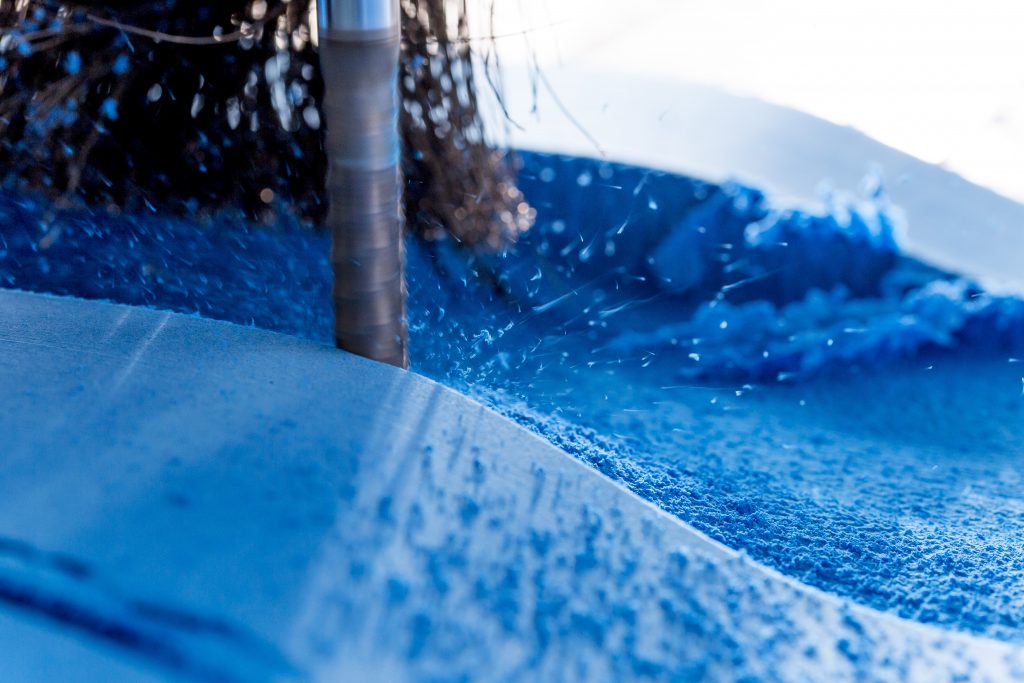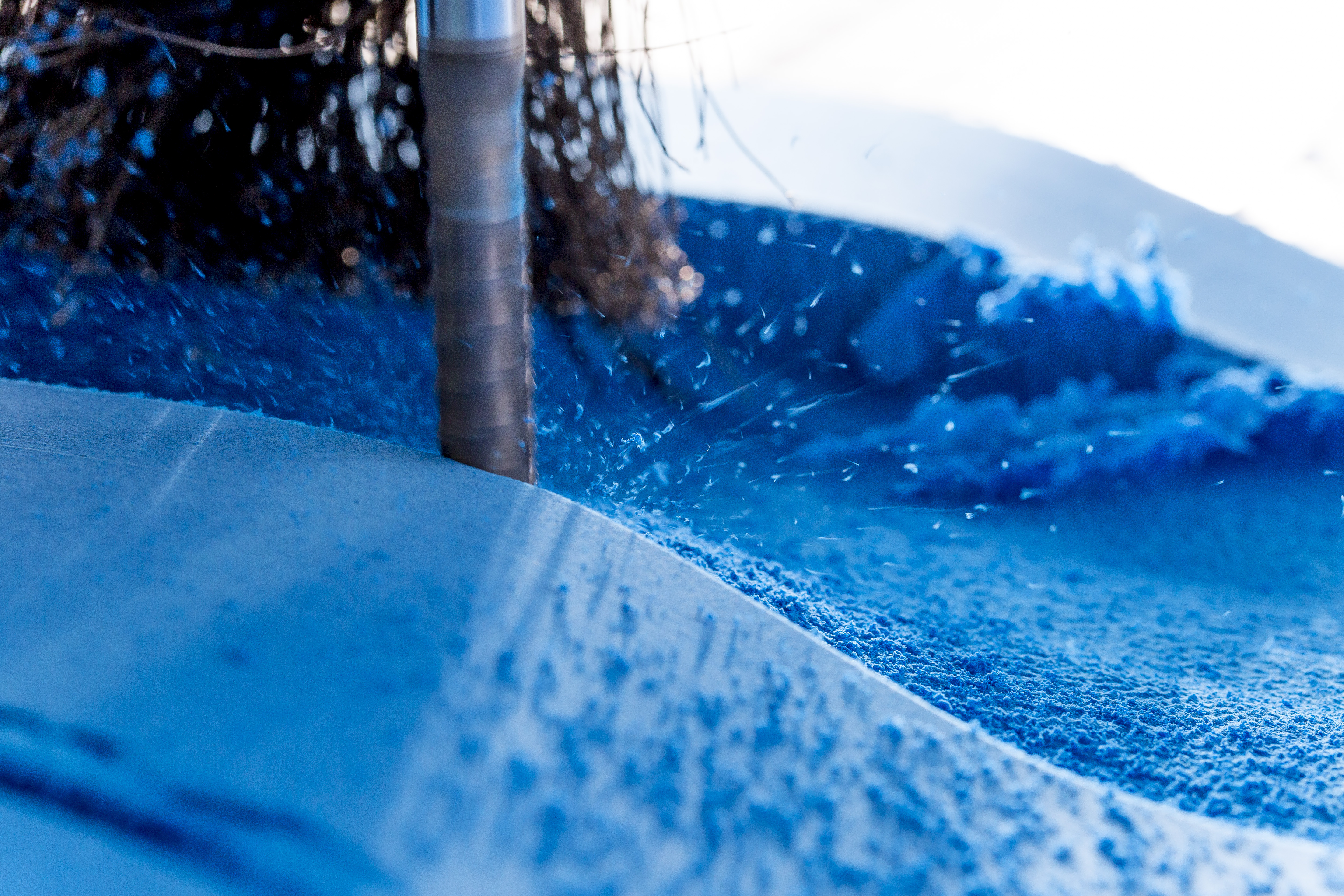Ill-fitting, inappropriate shoes can cause feet misalignment. This is why, for example, full-time industrial workers – who wear heavy safety shoes – need optimal orthopedic insoles. Using state-of-the-art 3D technology, Daniel Hartmann produces this medical aid. Professional athletes also rely on this high-tech orthopedic quality created in Central Hessen.

Gesa Felicitas Krause’s feet are under constant stress: running, jumping over hurdles, leaping over ditches, landing, rolling and then starting all over again – hundreds of times. This European 5K track and field champion trains hard, and her feet are assets. This is why they need optimal support, to prevent long-term damage and misalignment. Only then can this extraordinary athlete perform at her best, as she did at the 2018 European Athletic Championships in Berlin.
Tailor-made orthopaedic insoles
Therefore, athletes like Krause prefer orthopedic insoles that are optimally adapted to their feet and athletic activities. Krause relies on an orthopedic specialist company in Central Hessen: the Hartmann company, located in Dillenburg. This company specializes in intense exercise and biodynamic processes, and its owner knows exactly what high-performance athletes need. “While standard exercise shoes should remain elastic and cushioned for normal training, spiked competition shoes must have additional insoles for jumping,” explains Daniel Hartmann, managing director and master orthopedic shoemaker at Hartmann.
But in addition to orthopedic insoles for athletic shoes, Hartmann also produces insoles for safety shoes. These insoles range from very soft to strongly firm. Hartmann optimizes the insoles so they are adapted to the individual movement sequence. This is particularly important: According to podiatrists, orthopedic misalignments can cause severe pain when walking. Particularly for those workers who often have to wear safety shoes for longer than eight hours, for example, walking can be very stressful. But with an optimally manufactured insole, an even load is placed on each foot. This correct alignment prevents potential damage that results from misalignments such as hip problems. And in patients with arthritis, for example, Hartmann therefore prefers to add more padding so these patients can walk with comfort and pain-free.
But in addition to orthopedic insoles for athletic shoes, Hartmann also produces insoles for safety shoes. These insoles range from very soft to strongly firm. Hartmann optimizes the insoles so they are adapted to the individual movement sequence. This is particularly important: According to podiatrists, orthopedic misalignments can cause severe pain when walking. Particularly for those workers who often have to wear safety shoes for longer than eight hours, for example, walking can be very stressful.

Master orthopedic shoemaker at Hartmann
But with an optimally manufactured insole, an even load is placed on each foot. This correct alignment prevents potential damage that results from misalignments such as hip problems. And in patients with arthritis, for example, Hartmann therefore prefers to add more padding so these patients can walk with comfort and pain-free.
Diagnostics with modern 3D technology
To make the right insole for each foot, Hartmann measures his customers’ feet using different methods, such as the 3D footprint: An electronic sole sensor measures the forces acting directly on the foot during the stepping movement. The computer evaluates the pressure data and rolling line of the foot with 3D images. This information provides a precise overview of the pressure distribution over the entire sole of the foot. “For example, a one-sided peak load can be distributed evenly with softly lined custom insoles,” explains Hartmann.
And with a 3D foot scan, Hartmann takes pictures of the stressed sole of the foot. “This allows us to analyze the load surface of the foot and the skin texture. This allows us to determine where the orthopedic insoles need to have a corrective effect,” explains Hartmann. He then stores the data in order to later check the treatment’s success.
Modern orthopaedic technology at a glance

An electronic sole sensor measures forces that act directly on the foot during walking. The computer evaluates the pressure data and rolling line of the foot with 3D images. The result: a precise overview of the pressure distribution over the entire sole of the foot.

A 3D scan analyzes the load surface of the foot and the condition of the skin. The load area provides information about where orthopedic insoles need to have a corrective effect on the foot.

The digital system takes just five minutes to accurately measure the circumference and length of the legs for optimal support with perfectly fitting compression stockings. Due to the accuracy of these measurements, the intelligent data configurator of the software suggests the perfectly suitable orthopedic insoles.

Motion analysis evaluates how the foot behaves in the push-off, stationary and landing phases: The foot may bend inwards (pronation) or roll too much outwards (supination).
All measurement and analysis data flow into a CAD system, with which Hartmann’s technicians then create individual custom inserts and produce them on a fully automatic CNC milling machine – precisely tailored to the respective customer. And with this close focus on customer needs, Hartmann has already been able to save the careers of top athletes: He helped a well-known track and field athlete who suffered from extreme muscle problems in her lower leg. “Her pain was so severe that she could not train and was about to quit competitive sports. After we measured her legs and feet and made optimal orthopedic insoles, she was training again for competitions without pain,” says Hartmann.
With its orthopedic manufacturing expertise, Hartmann helps athletics to achieve top performance, ensures safety in dangerous working environments and relieves the orthopedic strain on patients. This makes the Hartmann company a prime example of the orthopedic manufacturing talent in the region of Central Hessen.
Company profile
Matthias Hartmann Orthopädie + Sport GmbH
The company Matthias Hartmann Orthopädie und Sport GmbH in Dillenburg focuses on healthy movement and biodynamic processes. The company, managed in its second generation by Daniel Hartmann, has existed for 28 years and currently employs more than 40 people.



